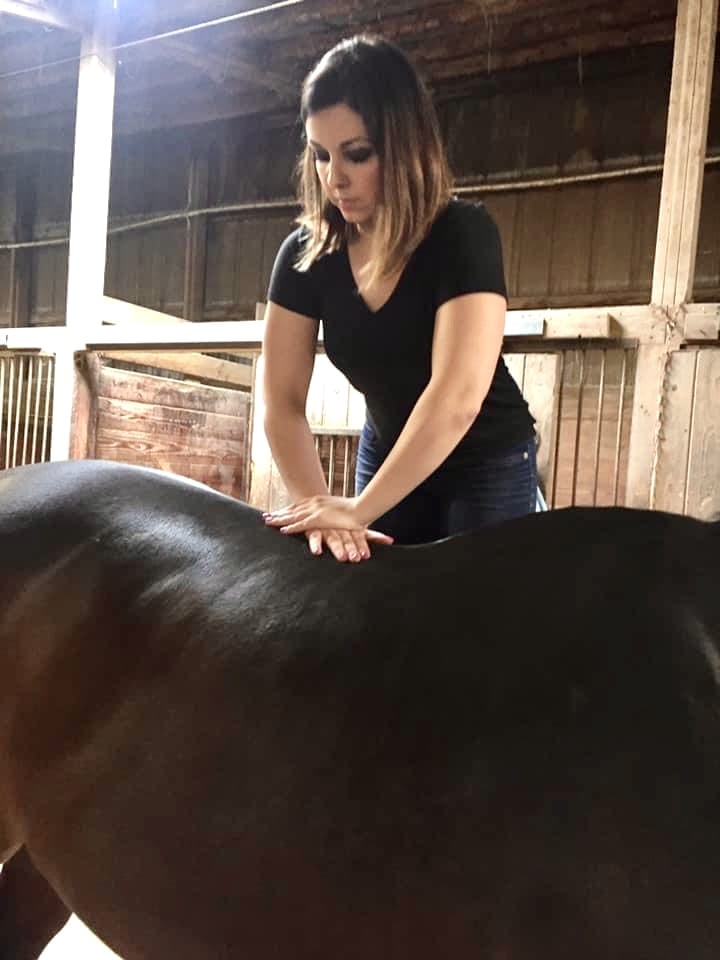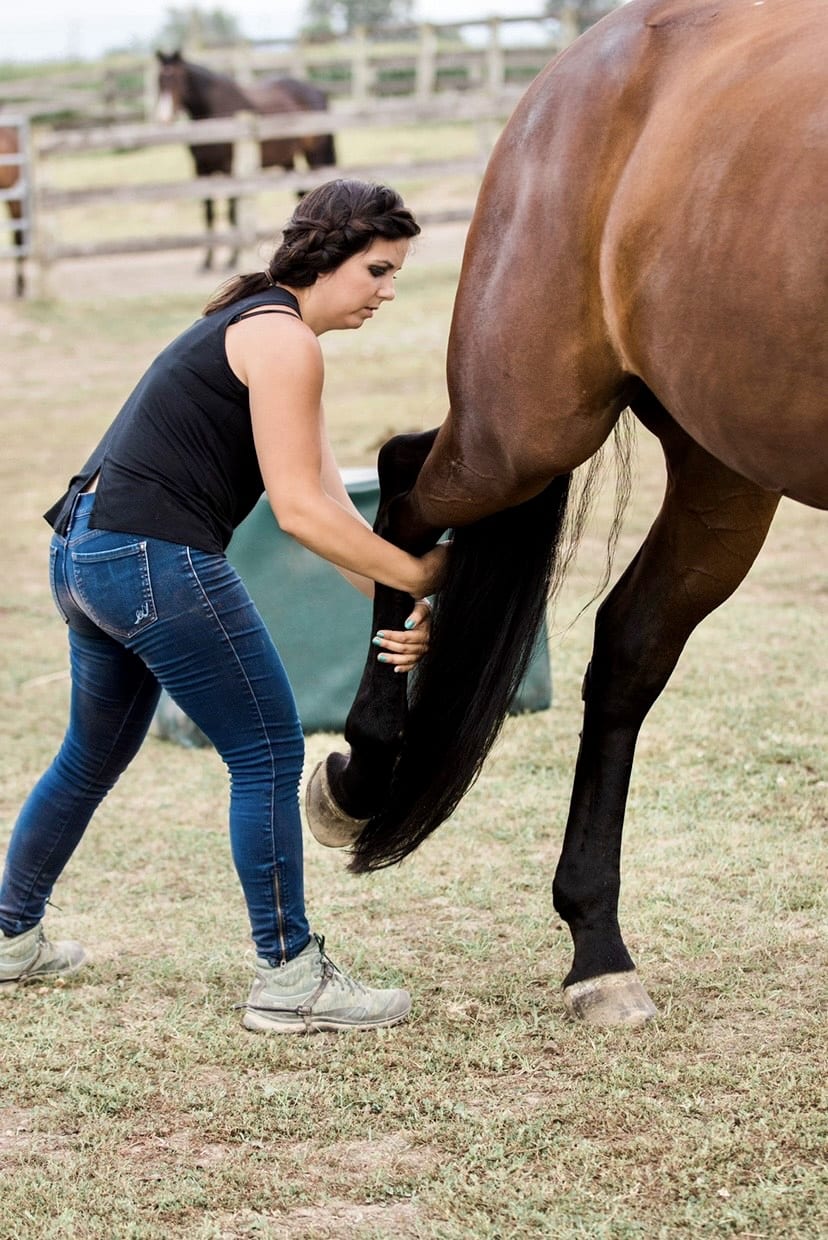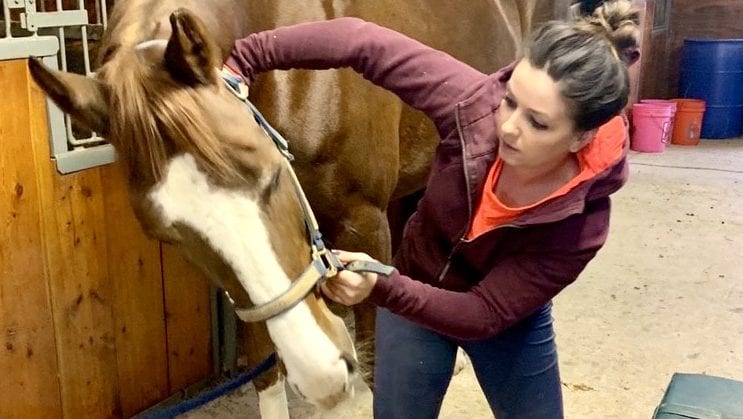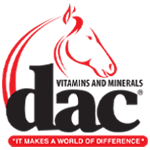Chiropractic care is beneficial for horses of all ages and athletic levels. Whether you are competing at the novice or the professional level, equine athletes are expected to perform in the show ring.
Quite a bit of training goes into preparing a performance horse, and with the increased workload comes the extra wear and tear on your horse’s body.
The increased demand on your horse’s body can lead to mechanical problems in your horse’s joints, and some areas of the body are more affected than others. A mechanical problem must be met with a mechanical solution. This is where chiropractic care comes into play.
Chiropractic is a gentle yet effective method of allowing your horse’s body to heal itself through the use of adjustments. A joint that needs to be adjusted has lost its motion and is called a restriction.
Restricted joints have a decreased range of motion, cause pain and muscle spasms to form, and the joints above and below will have to work harder to make up for the lack of movement. The adjustment relieves the restriction, allowing the return of motion to the joint in addition to decreased pain and stiffness.
Some areas are more prone to restrictions than others. Let’s explore some of the more common problem areas and how they can affect your horse’s performance.
CERVICAL SPINE
 One of the most common problem areas of the neck is around the poll. We always walk on the left side of the horse, which means the head is being pulled to the left anytime pressure is placed on the halter.
One of the most common problem areas of the neck is around the poll. We always walk on the left side of the horse, which means the head is being pulled to the left anytime pressure is placed on the halter.
Over time, this repetitive movement causes the first vertebrae of the neck to become restricted, and the majority of horses will need the left side of their upper neck adjusted.
When the upper neck becomes restricted, we can see various symptoms in horses, including difficulty flexing their head, difficulty extending their head, agitation with the bridle, headaches, head tilt, and behavioral changes both on the ground and under saddle. It will also make it more difficult for a horse to travel in a straight line.
Another common area of the cervical spine to become restricted is the mid to low neck. Often, horses with restrictions in this area will hold their head and neck towards one direction and may feel unbalanced under saddle.
Riders may notice that their horse has difficulty bending their neck or reaching their nose to a shoulder. Horses that jump are more prone to restrictions in their mid to low neck.
When a horse lands, it creates a whiplash-like effect in its mid to low neck, causing restrictions to form over time. If these primary restrictions are not released, they will eventually lead to secondary restrictions beginning in the shoulders.
WITHERS
Riders often mount from the same side of the horse, and sometimes they will even mount from the ground. This puts excess stress on the horse’s spine, especially around the withers forming rotational restrictions (the spinous process gets stuck in a left position from repetitively being pulled to the left when mounting).
Restrictions in the withers can cause agitation symptoms while saddling, twitching when touching the area, agitation during grooming, avoiding the mounting block, behavioral issues under saddle, twitching while under saddle, muscle spasm formation around the lower withers, and overall sensitivity in the area.
Twitching is a significant sign there is some inflammation in the area even if the horse does not appear to be in pain.
LUMBAR SPINE
 Lumbar spine flexion is essential for a horse to be able to canter collected and get his hind end underneath himself. Many riders cannot understand why their horse will not collect at the canter or lope despite all the different training techniques they have tried.
Lumbar spine flexion is essential for a horse to be able to canter collected and get his hind end underneath himself. Many riders cannot understand why their horse will not collect at the canter or lope despite all the different training techniques they have tried.
Have you ever accidentally sprayed cold water up your horse’s rear end while bathing them? If you have, you would see your horse react by tucking their butt underneath themselves.
This movement is essential for your horse to be able to canter collected under saddle. The abdominal muscles must contract, and the low back must flex (or round) for the horse to collect himself at a canter.
Restrictions in the low back will prevent your horse from physically being able to flex his low back. This means that no matter how hard you train or what techniques you use, the horse will physically be unable to make that movement.
Quite often, when restrictions form in this area, this part of the spine will appear to be raised, giving off the picture of a roach back.
PELVIS
 Many people become focused on the hocks and the stifles when a horse is having an issue with his rear end. But what about the pelvis? The pelvis is often overlooked as a root cause of a horse’s performance problem.
Many people become focused on the hocks and the stifles when a horse is having an issue with his rear end. But what about the pelvis? The pelvis is often overlooked as a root cause of a horse’s performance problem.
Restrictions in the pelvis can cause a horse to become short strided on one or both sides of his rear end. It can also cause several issues, including intermittent lameness, bunny hopping in the back, difficulty picking up leads, and continually swapping leads in the rear end. Other problems include difficulty standing for the farrier, picking up his hind legs, and flexing or extending his back legs.
As you can see, many common problem areas can form restrictions, and this can heavily affect your horse’s performance. Chiropractic adjustments remove these restrictions, allowing your horse to be pain-free and able to compete to his best ability.
When a horse has a problem in one area for an extended time, he has likely developed a problem in another area due to compensations. When a chiropractor sees a horse, the entire horse is checked for restrictions, not just the most obvious problem area. Give your performance horse the best chance possible and get them adjusted before their next competition.








